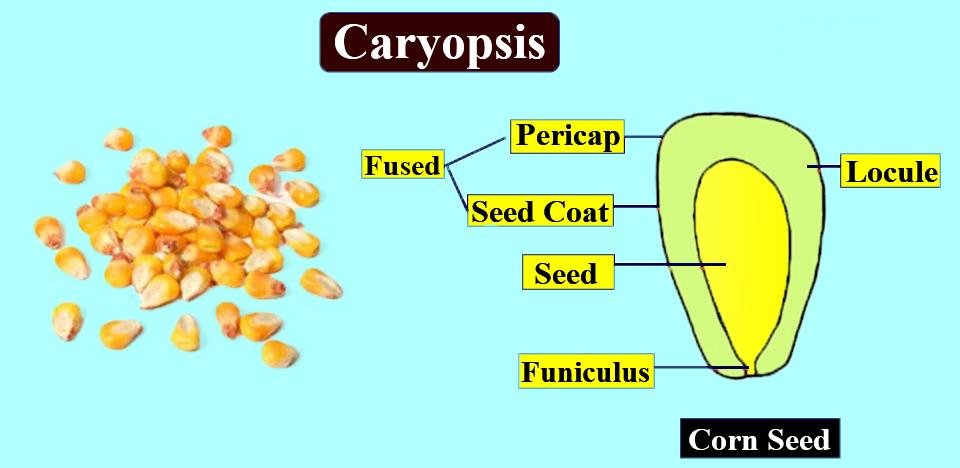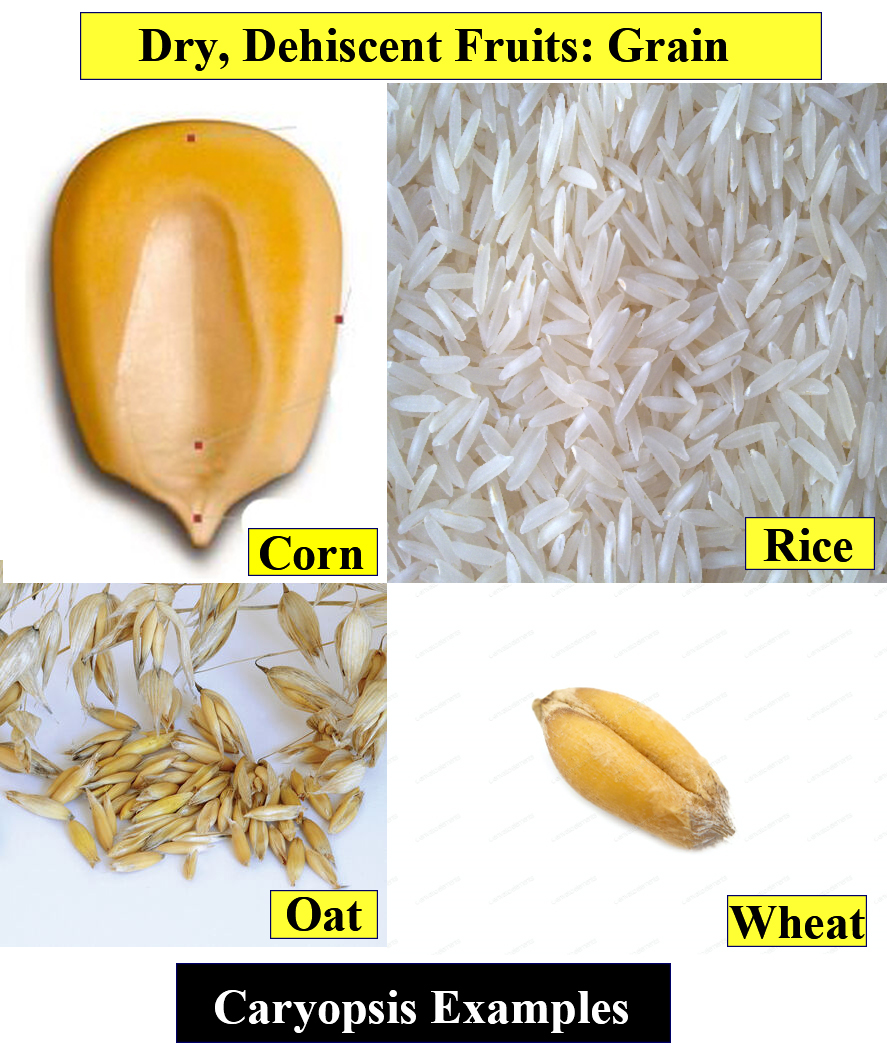
Fruit is caryopsis in
(a) Asteraceae
(b) Poaceae
(c) Fabaceae
(d) Liliaceae
Answer
566.7k+ views
Hint: The plants that belong to this family are an important source for food such as wheat, maize, oats,etc., These plants are used as fodder also, their seeds are monocotyledonous and endospermic.
Correct step by step answer:
Caryopsis is also called grain, these are a specialized type of dry, one- seeded fruit that is characteristic of the Poaceae family of grasses. These plants might be herbs or shrubs and sometimes like trees. These are annual or perennials with fibrous, adventitious, branched, or stilt roots.


So, the correct answer is 'Poaceae'.
Additional Information:
- In caryopsis, the ovary wall is united with the seed coat, and fused into a single unit.
- It is formed from a single carpel and it does not open at maturity. - All the cereal grains have caryopsis except buckwheat.
- In the plants of the Poaceae family the stem is underground, woody, cylindrical with conspicuous nodes and internodes.
- They have simple, alternate, and leaves exstipulate whose base forms tubular sheath.
- Plants used as a food source are Oryza sativa, Triticum aestivum, Avena sativa (oats), Zea mays (Maize).
- The grasses such as Panicum, Cynodon dactylon, Cymbopogon, and Poa are used as fodder.
- The Jaggery and sugar are obtained from the Saccharum officinarum of the Poaceae family.
Note:
- In the family Poaceae, the species of Bambusa are used for scaffolding and thatching of huts.
- Plants of this family are economically very important because some are used to yield scented oils from their roots e.g., Vetiveria zizanioides, and also its root is used in weaving curtains.
- Some plants such as Phragmites karka, Claviceps purpurea, Cymbopogon schoenanthus also have medicinal values.
Correct step by step answer:
Caryopsis is also called grain, these are a specialized type of dry, one- seeded fruit that is characteristic of the Poaceae family of grasses. These plants might be herbs or shrubs and sometimes like trees. These are annual or perennials with fibrous, adventitious, branched, or stilt roots.


So, the correct answer is 'Poaceae'.
Additional Information:
- In caryopsis, the ovary wall is united with the seed coat, and fused into a single unit.
- It is formed from a single carpel and it does not open at maturity. - All the cereal grains have caryopsis except buckwheat.
- In the plants of the Poaceae family the stem is underground, woody, cylindrical with conspicuous nodes and internodes.
- They have simple, alternate, and leaves exstipulate whose base forms tubular sheath.
- Plants used as a food source are Oryza sativa, Triticum aestivum, Avena sativa (oats), Zea mays (Maize).
- The grasses such as Panicum, Cynodon dactylon, Cymbopogon, and Poa are used as fodder.
- The Jaggery and sugar are obtained from the Saccharum officinarum of the Poaceae family.
Note:
- In the family Poaceae, the species of Bambusa are used for scaffolding and thatching of huts.
- Plants of this family are economically very important because some are used to yield scented oils from their roots e.g., Vetiveria zizanioides, and also its root is used in weaving curtains.
- Some plants such as Phragmites karka, Claviceps purpurea, Cymbopogon schoenanthus also have medicinal values.
Recently Updated Pages
Master Class 12 Business Studies: Engaging Questions & Answers for Success

Master Class 12 Economics: Engaging Questions & Answers for Success

Master Class 12 English: Engaging Questions & Answers for Success

Master Class 12 Maths: Engaging Questions & Answers for Success

Master Class 12 Social Science: Engaging Questions & Answers for Success

Master Class 12 Chemistry: Engaging Questions & Answers for Success

Trending doubts
What is meant by exothermic and endothermic reactions class 11 chemistry CBSE

Which animal has three hearts class 11 biology CBSE

10 examples of friction in our daily life

One Metric ton is equal to kg A 10000 B 1000 C 100 class 11 physics CBSE

1 Quintal is equal to a 110 kg b 10 kg c 100kg d 1000 class 11 physics CBSE

Difference Between Prokaryotic Cells and Eukaryotic Cells




